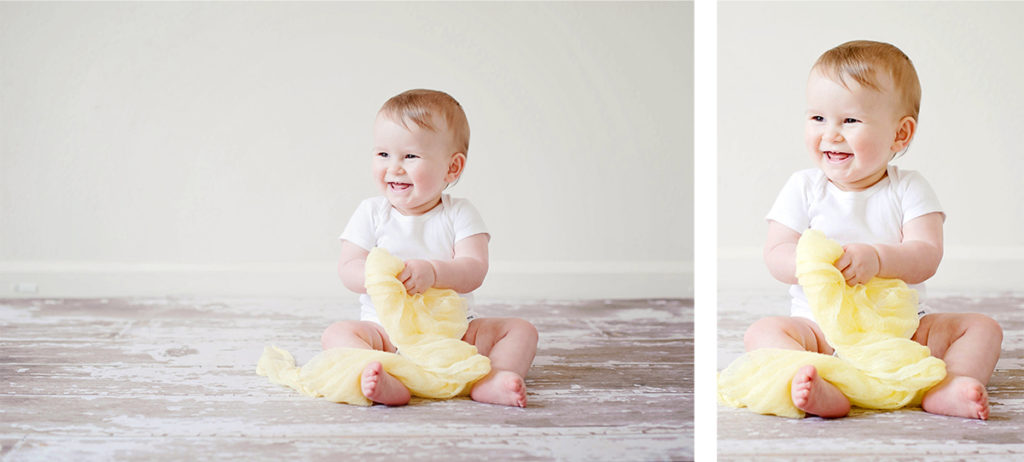
Find your ideal photo editing process (and get more from your time)
Blog » Business & Marketing, August 19, 2019, Dominic BryantWithout a doubt, editing is the most in-depth and time-consuming part of school photography, aside from the actual school or nursery photo day itself. In a school with 350 children, for example, you’ll take somewhere between 3000 and 3500 photos altogether, even before you’ve started uploading and editing them.
Such large quantities mean a strong editing workflow is absolutely vital. Not only does it save you time and effort with photo editing, but it also helps you continue to find pleasure in your work.
In this article, you’ll find our best tips for getting ahead with photo editing. For now, our top piece of advice: stick to one clear vision. After that, practice makes perfect.
Get Off on a Good Foot
It goes without saying that digital photography relies on strong raw images. Aside from resolution, you can also influence factors like image detail and sharpness while still working on photo day, to avoid unnecessary work during editing.
The success of this depends of course on the conditions of your shoot. It makes a big difference whether the photos are taken indoors with flash or continuous lighting, or outside in bright daylight, or even taking candid snaps of children playing outside.
In principle, here’s what you need to know for indoor photography:
- You have full control over the light conditions, including the exposure, the white balance and sharpness, and of course the direction of light.
- It pays to think about the field of view while you’re still taking the photos and make it ‘right’ at the moment. You should also be aware that some photo products might have a different aspect ratio to your raw images. That’s why it’s always a good idea to leave a little extra room around the main subject.
…and for outdoor photography:
- Frequent shifts in lighting conditions make controlling the exposure, white balance, etc., much harder.
- When taking candid pictures, that’s where keen reactions and flexibility will come into play. Working quickly causes other factors to suffer: sharpness (shaking, motion blur, inaccurate focus), exposure, white balance (particularly shadows) or framing.
Tip: Whenever you have the opportunity while working outside, try to use flash and reflectors to maintain constant light conditions and make your job easier later on.


Data Import
We all know that sinking feeling after a photo day when you realise something has gone awry and then – even worse – you have no backup.
So above all else: keep your data safe. At the very least make copies as soon as possible. To be extra safe, do it on the same day the images were taken.
This shouldn’t be just one step in your photo editing process, but be carried out on a regular basis.
Structure and Organisation
We cannot recommend a clear and well thought out organisational structure enough. Although it often goes unnoticed, good organisation is of the utmost importance.
Don’t fall into the trap of creating a maze of folders! Particularly when it comes to different editing methods, selecting photos, and the myriad of other tasks that fall to photographers, a clear folder structure is vital. Original and edited photos need to be easy to find to avoid creating unnecessary duplicates and doubling up on work.
And sorting and selecting photos is different nowadays than simply having folders on your hard drive. The smart, quick and regular collections from Lightroom are a nifty little tool for example when it comes to avoiding files piling up. You can read more about their functions in Lightroom’s User Guide. Amongst other things, they make it possible to give your own photos a star rating. For speedy photo selection, it can be very helpful.
Photo Editing in post-production
Photos taken indoors generally take less time and effort to edit in comparison to those taken outside – regardless of whether you use Lightroom, Capture One or Photoshop.
Every photographer has their own personal editing style and it can be an incredibly enjoyable and rewarding process putting the finishing touches to an excellent photo. However, while we do not wish to dampen your spirits it is worth keeping in mind that:
Lengthy photo editing quickly eats into your profits.
This is just a fact, and we know many of you are keen to grow your businesses. Building a strong photo editing process and streamlining it where necessary is therefore vital for any professional school or nursery photographer.
Tip: Take a good look through your current workflow. Write down how you go about editing. You might find in a couple of places that the order is not quite clear and it depends more about the individual situation and your own photographer instinct.
Now compare your notes with the following tips and tricks. What can be adjusted or changed? What are you dissatisfied with? What’s going well?
Your workflow: From the first step to a finished photo, in school and nursery photography
In our experience, it makes sense to start off with the edits that affect the whole image, or even several photos. Take care of the details and minor changes for individual photos at the end.
A way to do this is to utilise the useful pre-sets option in Lightroom. Any serious school or volume photographer will know the importance of utilising pre-sets in Lightroom when it comes to the editing process. This can save a wealth of time when it comes to dealing with thousands of photos. Having pre-sets that recognise your lens, plus the typical adjustments you make for tones, levels and presence is vital. Once you have used your pre-set for all the imported photos you can begin culling and come round to more detailed edits later on.
Apart from that we recommend the following order:
1. Cropping/trimming and rotating
This is one of the most time-consuming steps. At the same time, it has the biggest effect on the end result, as it affects the entire composition of the image.

2. Lens corrections
Enough said: do your lens corrections!
3. Exposure, contrast, and levels
As we know, tone is not the same as colour. The tone describes the intensity of every pixel from bright white to deep black. As small changes to these can have great effect on the entire photo, it’s best to get the colour settings tidied away early.
4. White balance and colours
If the white balance needs extensive corrections, maybe because an indoor photo was taken with outdoor settings, it’s best to do this step before levels. If there’s not so much to do, then you can go ahead with saturation and other effects.


5. Correct selected areas
This step includes, amongst other things, dodging and burning the exposure, as well as selective colour correction. However, it’s quite rare in school and nursery photography, as it eats up a lot of time.
6. Reduce blemishes
If you used a high ISO in the dark, or if the image was too underexposed, getting rid of some blemishes or distortion might be necessary. Since the changes made prior to now can also affect such flaws, it makes sense to address them at this stage.
7. Sharpness
Sharpness refers to adjusting the contrasts. The brightness of adjacent pixels along the borders within a photo affect the sharpness. The higher the contrast, the sharper the subject.
8. Retouching
If all of the other steps haven’t already helped to sort out small flaws, then now is the time.
9. Other special effects
Of course, the fewer steps you actually needed to use from those listed here, the faster the process is.


Then and only then…
Leave any changes that affect the image resolution until the very end, and always keep the original file! A good image editing workflow allows you to change your mind about certain editing steps and also be able to adjust them without sacrificing quality.
Your workflow affects…
…successes and missteps, happy customers, good timeliness, profits and losses, and above all you own personal satisfaction.
If there is no system behind your workflow in post-production, unnecessary stress will keep popping up. It’s also probably the reason behind the quality losses that you’ll want to avoid.
Your ideal workflow won’t be built in a day. It’s a process, like all the good things in life. Every step will need to be practiced and refined a few times before you’ve developed a well-oiled routine.
It might make sense for you to put up a list of your steps in your workplace or office before you get started. If your thoughts begin to wander after a step, you can then take a look at your organised workflow on the wall, and ensure you remain on the road to success.
The edited photo on the computer screen in the featured image of this article was taken by Janine Wienick of Kleine Pünktchen.
Dominic Bryant

